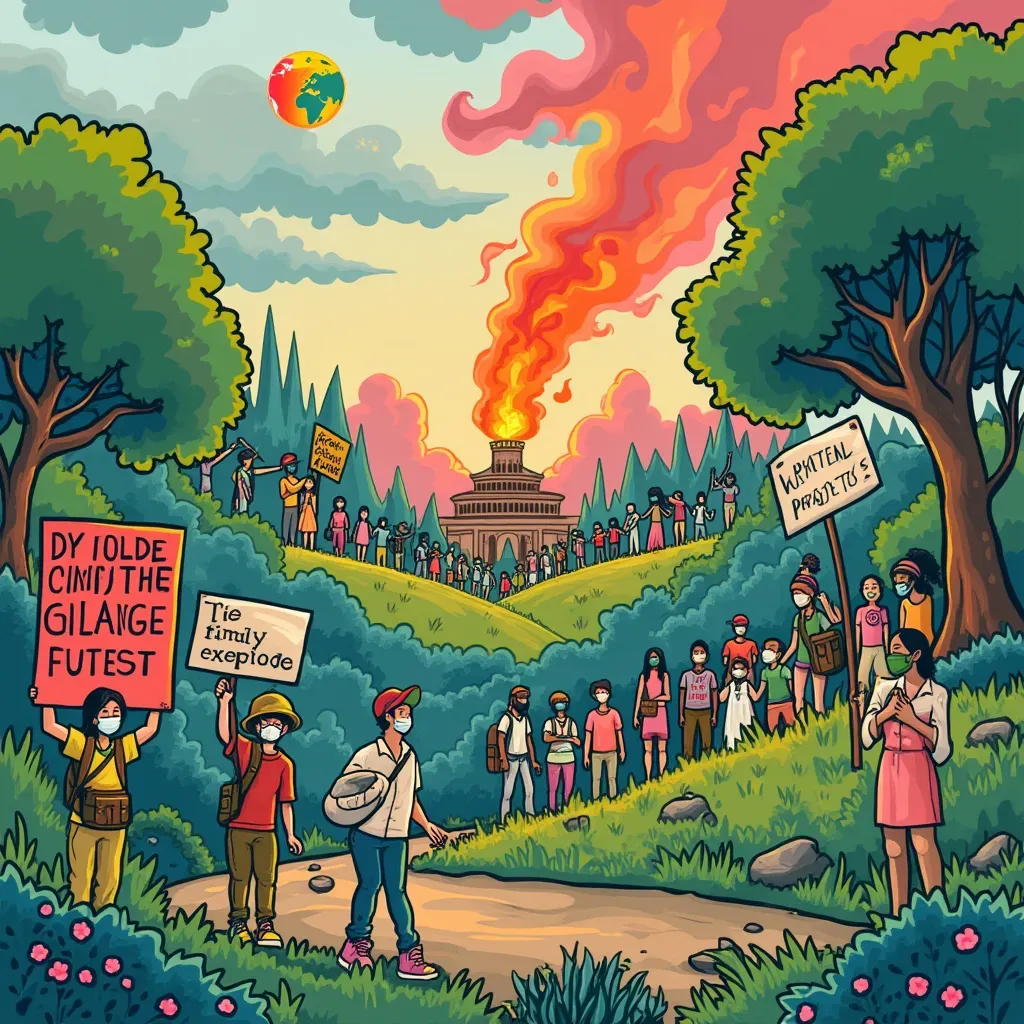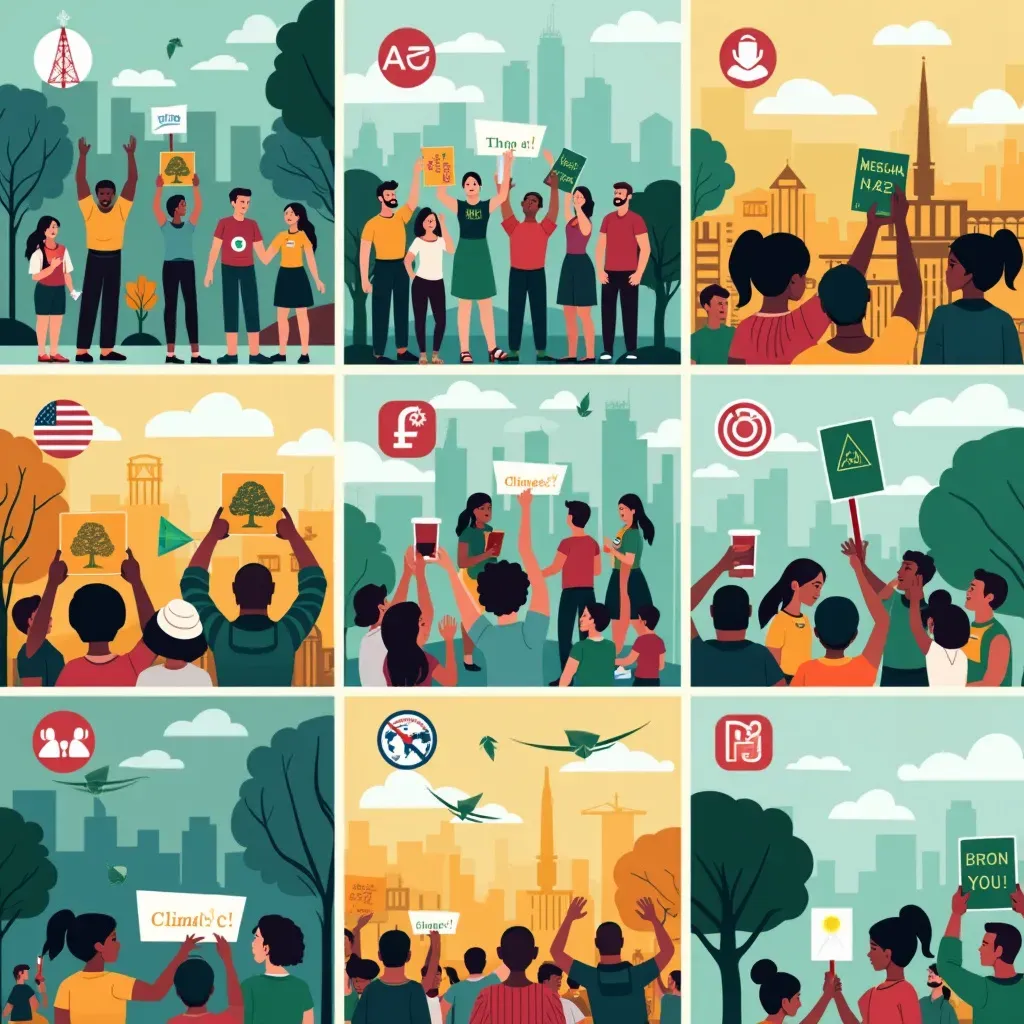Understanding Climate Change Protests: History, Impact, and How to Get Involved
Discover the history, significance, and ways to get involved in climate change protests. Learn about recent examples and the impact of climate activism. Join the movement for a sustainable future! 🌱

Climate change is one of the most pressing issues of our time, and as the effects of a warming planet become increasingly evident, people around the world are taking to the streets to demand action. 🌍 Climate change protests have become a powerful tool in raising awareness, influencing policy, and mobilizing communities. But what exactly are climate change protests, and why are they so important? In this article, we'll dive into the history of these protests, their significance, and how you can get involved. We'll also look at recent examples of climate activism and explore the challenges and future directions of the movement. Let's get started! 🚀

Introduction to Climate Change Protests
Climate change protests are public demonstrations where individuals and groups gather to raise awareness about climate change and demand action from governments, corporations, and other entities. These protests can take many forms, including marches, sit-ins, rallies, and more creative expressions like flash mobs and die-ins. 🌿
The history of climate change protests dates back to the late 20th century when environmental awareness started to gain momentum. One of the earliest significant events was the first Earth Day in 1970, which saw millions of people worldwide participating in environmental demonstrations. Fast forward to the 21st century, and climate protests have become more frequent and widespread, thanks in part to the rise of social media and the increased urgency of the climate crisis. 🌐
Notable movements include the Global Climate Strikes inspired by Greta Thunberg, the Extinction Rebellion protests, and the annual Earth Day events that continue to draw attention to environmental issues. These protests have succeeded in bringing climate change to the forefront of public discourse and have pressured policymakers to take more aggressive action. 🌍
Why Climate Change Protests Are Important
Climate change protests are crucial for several reasons. Firstly, they raise awareness about the severity of the climate crisis. By bringing people together and creating a visible, collective voice, these protests highlight the urgency of taking action. 🗣️
Secondly, climate change protests put pressure on governments and corporations to implement policies and practices that reduce carbon emissions and promote sustainability. Protests can lead to significant policy changes, such as the adoption of renewable energy sources, stricter environmental regulations, and increased funding for climate research. 🌱
Key issues addressed in climate change protests include reducing greenhouse gas emissions, protecting biodiversity, transitioning to renewable energy, and promoting environmental justice. These protests also emphasize the interconnectedness of social, economic, and environmental issues, advocating for a holistic approach to addressing the climate crisis. 🌎
By participating in climate change protests, individuals can contribute to a larger movement that amplifies their voices and demands accountability from those in power. This collective action is essential for driving the systemic changes needed to combat climate change effectively. 🚀

How to Get Involved in Climate Change Protests
Getting involved in climate change protests is easier than you might think. Here are some steps to help you get started:
- Educate Yourself: Learn about the climate crisis and the specific issues that climate change protests address. Read books, watch documentaries, and follow reputable sources of information. 📚
- Join Local and Global Movements: Look for climate activist groups in your area or online. Organizations like Fridays for Future, Extinction Rebellion, and Greenpeace often organize protests and events that you can participate in. 🌍
- Attend Protests: Find out when and where protests are happening and make plans to attend. Bring friends and family to increase your impact. 👫
- Use Social Media: Share information about climate change and upcoming protests on social media. Use hashtags like #ClimateStrike and #FridaysForFuture to connect with a larger audience. 📱
- Support Climate-Friendly Policies: Advocate for policies that address climate change by contacting your elected officials and voting for candidates who prioritize environmental issues. 🗳️
- Make Sustainable Choices: Reduce your carbon footprint by adopting sustainable practices in your daily life, such as using public transportation, reducing waste, and supporting eco-friendly businesses. 🌱
Every action, no matter how small, contributes to the larger movement for climate justice. By getting involved, you can help create a more sustainable and equitable future for all. 🌎

Recent Examples and Impact of Climate Change Protests
Recent climate change protests have had a significant impact on public opinion and policy. Here are a few notable examples:
- Just Stop Oil: This movement has gained attention for its direct actions aimed at stopping new oil and gas projects. Their protests have included blocking roads and disrupting public events to draw attention to the urgent need to transition to renewable energy. 🚫
- Restore Nature Now March: This march, held in several countries, brought together thousands of people to demand the restoration of natural habitats and the protection of biodiversity. The event highlighted the importance of preserving ecosystems to combat climate change. 🌿
- Human Chain in the Netherlands: In 2024, activists in the Netherlands formed a human chain to protest against fossil fuel investments. This powerful visual demonstration aimed to pressure financial institutions to divest from fossil fuels and invest in sustainable alternatives. 🔗
These protests have not only raised awareness but also led to tangible outcomes. For instance, the actions of Just Stop Oil have sparked debates in political arenas, leading to discussions about stricter regulations on fossil fuel projects. The Restore Nature Now march has influenced policy changes in several countries, resulting in increased funding for conservation efforts. 🌍
The impact of climate change protests is evident in the growing public support for climate action and the increasing number of policies aimed at reducing carbon emissions. By continuing to organize and participate in these protests, activists can keep the pressure on policymakers to take the necessary steps to address the climate crisis. 🌱
Challenges and Future Directions
Climate change protesters face several challenges, including legal repercussions, public backlash, and the physical and emotional toll of activism. In many countries, protesters risk arrest and imprisonment for participating in demonstrations. Additionally, there can be significant public opposition, particularly from those with vested interests in maintaining the status quo. 😔
Despite these challenges, the future of climate activism is bright. Here are some potential directions for the movement:
- Intersectional Activism: Recognizing the interconnectedness of social, economic, and environmental issues, future climate activism will likely focus on intersectional approaches that address multiple issues simultaneously. 🌍
- Innovative Protest Tactics: Activists will continue to develop creative and non-violent protest tactics that capture public attention and highlight the urgency of climate action. These might include art installations, digital campaigns, and community-based initiatives. 🎨
- Global Solidarity: Building stronger networks of global solidarity will be essential for amplifying the impact of climate protests. By connecting local movements to a global audience, activists can create a more unified and powerful force for change. 🤝
- Youth Leadership: The rise of youth-led movements, such as Fridays for Future, demonstrates the power of young voices in the climate movement. Supporting and empowering the next generation of climate activists will be crucial for sustaining momentum and driving long-term change. 👩👧👦
As the climate crisis continues to unfold, the role of climate change protests will remain vital. By overcoming challenges and embracing new strategies, activists can ensure that their voices are heard and that meaningful action is taken to address the climate emergency. 🌱
Climate change protests are a powerful tool for raising awareness, influencing policy, and mobilizing communities to take action against the climate crisis. From their historical roots to recent impactful demonstrations, these protests have shown that collective action can drive significant change. 🌍
By getting involved in climate activism, whether through attending protests, advocating for policies, or making sustainable choices in your daily life, you can contribute to the larger movement for climate justice. Together, we can create a more sustainable and equitable future for all. 🌱
Ready to join the fight against climate change? Start by educating yourself, connecting with local and global movements, and taking action in your community. Every voice matters, and together, we can make a difference. 💪



